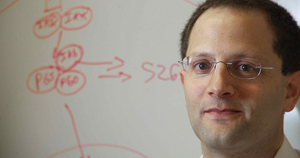Bringing History to Life: How Larry Swiader ’89, G’93 Blends Storytelling With Emerging Technology
Instructional design program alumnus Lawrence “Larry” Swiader ’89, G’93 has built a career at the intersection of storytelling, education and technology—a path that’s taken him from the early days of analog editing as a student in the S.I. Newhouse School…


 Exercise has been shown to help control weight, improve mood and reduce the risk of certain diseases. Stefan Keslacy, assistant professor of exercise science in the School of Education, is taking the research further with one specific disease—looking at whether exercise can stem the debilitating symptoms of Alzheimer’s disease and pinpointing a treatment that would mimic those effects.
Exercise has been shown to help control weight, improve mood and reduce the risk of certain diseases. Stefan Keslacy, assistant professor of exercise science in the School of Education, is taking the research further with one specific disease—looking at whether exercise can stem the debilitating symptoms of Alzheimer’s disease and pinpointing a treatment that would mimic those effects.